Xeriscape Landscaping Plants For The Arizona Desert Environment.
Pictures, Photos, Information, Descriptions,
Images, & Reviews.
Cactus.
Bunny Ears Cactus, Opuntia microdasys.
We Are Proud Of Our SafeSurf Rating!
Click On Any Of The Following Links By Amazon.Com
For Books, & Videos About Wildflowers Of Arizona & The Southwest USA. No Obligation!
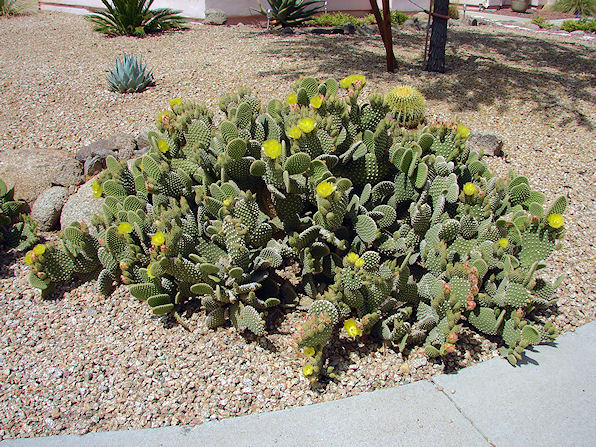 |
| Bunny Ears Cactus, Opuntia microdasys. Flowering Plant. |
|---|
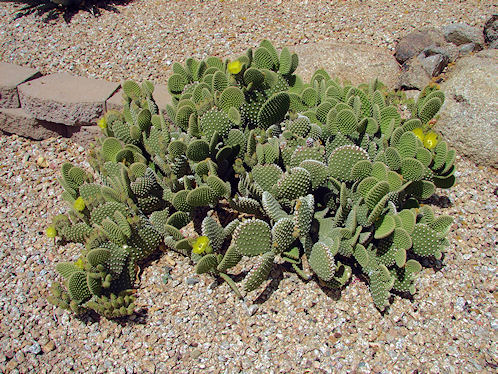 | 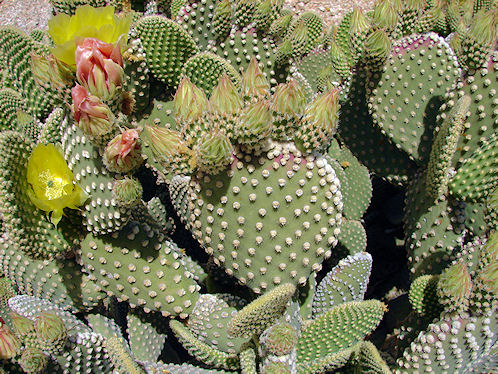 |
| Bunny Ears Cactus, Opuntia microdasys. Flowering Plant. | Bunny Ears Cactus, Opuntia microdasys. Leaves or Segments. |
|---|---|
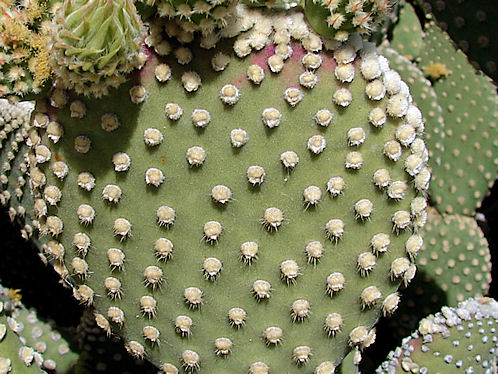 | 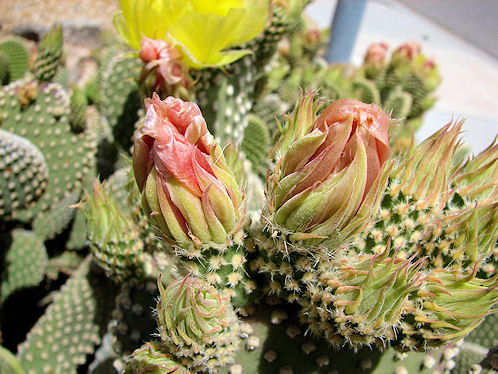 |
| Bunny Ears Cactus, Opuntia microdasys. Glochids. | Bunny Ears Cactus, Opuntia microdasys. Flower Buds. |
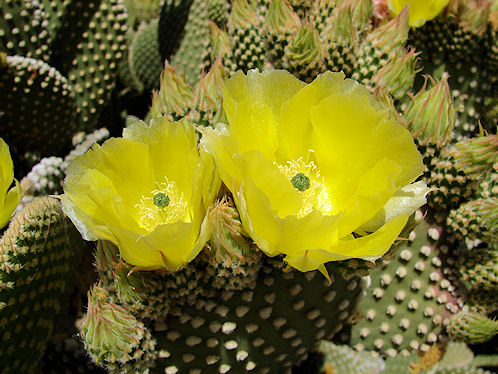 | 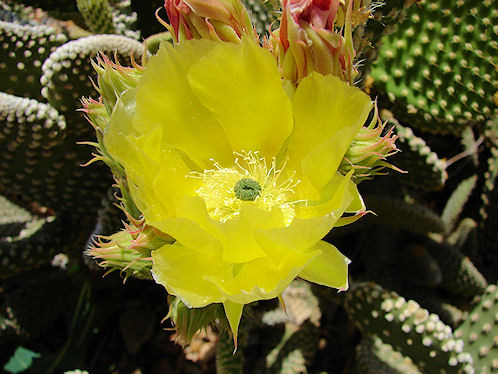 |
| Bunny Ears Cactus, Opuntia microdasys. Flowers. | Bunny Ears Cactus, Opuntia microdasys. Flower. |
 /
/

Bunny Ears Cactus.
We wish to thank Wikipedia, the free encyclopedia for some of the information on this page. We share images and information with Wikipedia. A very attractive Opuntia with tiny, silver - whitish colored, soft, fuzzy looking glochids. It has no spines. But, the attractive glochids are deceptively nasty. They stick to your skin with the slightest touch or movement of air and then they are very difficult to remove. If moving the plants, wet them down before working near them. That way you reduce the blowing away of the glochids. The best method we have found to remove the glochid spines is to coat the area affected with Elmer's Glue and let it dry. Then you can peel the glue off. Almost all the spines will pull out with the glue. Sometimes, we chew gum when working with this cactus. Then you can roll the gum over the affected area and remove many of the spines. Another way to remove these particular spines is duct tape. Press tape down carefully going in one direction, remove it quickly going the other. Follow up with tweezers, and a magnifying glass, in good light. These plants are great for Xeriscape Gardens, especially in an area that you want to protect from trespassing. It keeps dogs, raccoons, & trespassers out of areas of your yard where you don't want them! We placed them in a corner of our yard that we wanted to protect. No More Problems! This species is also very prone to rot if watered to much via sprinklers. It cannot grow in the shade. It requires dry soil and can tolerate drought. The closely related Opuntia rufida differs by having reddish-brown glochids; it is found native further north than Opuntia microdasys, in northern Mexico, and also into western Texas. Some botanists treat the two as a single species.
Quick Notes:
Height: Height from 1 1/2 foot to about 2 feet. Spreading to about 6 feet.
Flowers: The lemon yellow flowers are 1 - 2 inches in diameter.
Blooming Time: Spring to Fall.
Leaves or Segments: Green cactus pads 2-1/2 to 5-1/2 inches and 2-1/2 to 5-1/2 inches, about 1/2 inches thick. They are glabrous or slightly pubescent and have glochids (little barbed bristles organized in clusters) that are soft looking and silver - white.
Fruit: Green spineless edible fruit, 1-1/4 inches in diameter dry when ripe.
Seeds: Black oval - about 1/32 inch in length.
Found: Native to northern Mexico: Chihuahua, Coahuila, Durango, Nuevo Leon, San Luis Potosi, & Zacatecas. Also native to southern Mexico: Guanajuato, Hidalgo, Jalisco, & Queretaro. The USDA claims it is native to the USA (AZ).
Elevation: 0 -6,500 Feet.
Hardiness:
Soil pH requirements:
Habitat: Gravel or sandy flats, mesas, hillsides. A landscape plant in some places.
Miscellaneous: Plant has glochids (little barbed bristles organized in clusters) that are soft looking. But, use extreme caution when handling, they are sharp and break off easy, by even a slight wind. They can cause very painfull injury! Pollen may cause allergic reaction. Needs full sun and be careful not to overwater. Can rot easily. Great xeriscape plant for Arizona. Photos taken in Glendale, Arizona. April 8, 2012.
|
We Are Proud Of Our SafeSurf Rating!



We Are Proud Of Our SafeSurf Rating!
Click On Any Of The Following Links By Amazon.Com
For Books, & Videos About Xerioscape Plants Of Arizona & The Southwest USA. No Obligation!
Back To Arizona Xeriscape Landscaping Main Page.
Back To Xeriscape Cactus Page Four.
Back To Arizona Wild Flowers Home Page
Back To DeLange Home Page
© 1966 - Present, Audrey, Eve, & George DeLange
| © 1966 - Present, Audrey, Eve, & George DeLange |


